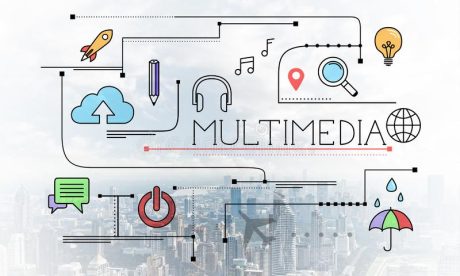100
MULTIMEDIA TECHNOLOGY PART 2 This is a continuation of the Multimedia Technology Course Part 1 DOWNLOAD COURSE HERE
TAKE THIS COURSE
100 SEATS LEFT
MULTIMEDIA TECHNOLOGY PART 2
This is a continuation of the Multimedia Technology Course Part 1DOWNLOAD COURSE HERE
Course Currilcum
- MT2: Unit 1 MULTICAST – MULTIMEDIA APPLICATION DEVELOPMENT FREE 00:40:00
- In this unit, we will learn the basics about Multicast process in the transfer of Information and then go on to study about some other Multimedia protocols in the Multimedia System. 2.0 OBJECTIVES What you would study in this unit, would enable you: Explain what a Multicast is Understand the Mbone Concept. Identify the major characteristics of an Mbone
- MT2: UNIT 2 ROUTING – MULTIMEDIA APPLICATION DEVELOPMENT FREE 00:40:00
- OBJECTIVES At the end of this unit, you should be able to: Give a concise explanation of what a Router is Identify the desired features of a Router Discuss the relationship between the Router and Internet
- MT2: UNIT 3 PROTOCOLS – MULTIMEDIA APPLICATION DEVELOPMENT Unlimited
- In this unit, we shall define what a protocol and its different elements. This will facilitate a deeper understanding of the different multimedia applications. 2.0 OBJECTIVES At the end of this unit, you should be able to: Give a concise definition of a Protocol Identify the features of the elements of a protocol. Differentiate between a Session control protocol and a real time transfer protocol
- MT2: UNIT 4 VIDEO CONFERENCE – MULTIMEDIA APPLICATION DEVELOPMENT Unlimited
- In this unit, you'll gain knowledge of the concept of Video conferencing. You would also learn about the different types of video conferencing system. 2.0 OBJECTIVES What you would study in this unit would equip you to do the following: What is Video Conferencing In your own words explain the concept of Video Conferencing Identify the types of Video Conferencing Systems
- MT2: Unit 1 INTRODUCTION – MULTIMEDIA ACCESS SYSTEMS Unlimited
- INTRODUCTION Internet Telephony refers to communications services—voice, fax, SMS, and/or voice-messaging applications—that are transported via the Internet, rather than the public switched telephone network (PSTN). In this unit, we shall consider deeply the concept of Internet Telephony as this will give a deeper understanding of the relationship between VoIP and the Internet Telephony. 2.0 OBJECTIVES At the end of this unit, you should be able to: Describe Internet Telephony Service Identify the steps involved in processing a VoIP call. List the advantages and Disadvantages of Internet Telephony
- MT2: UNIT 2 COMPUTER TELEPHONY INTEGRATION – MULTIMEDIA ACCESS SYSTEMS Unlimited
- In this unit we will consider the technology known as the Computer Telephony Integration. The unit will equally analyse the origins, functions and forms of Computer Telephony Integration. 2.0 OBJECTIVES At the end of this unit, you should be able to: Give a concise description of the forms of Computer Telephony Integration? Explain the need for a computer Telephony Integration Explain the First-party call control form of CTI
- MT2: UNIT 3 DIGITAL SUBSCRIBER LINE – MULTIMEDIA ACCESS SYSTEMS Unlimited
- After traditional modems reached their peak data rate, telephone companies developed another technology, DSL (Digital Subscriber Line), to provide higher speed access to the internet. Digital Subscriber line technology is one of the most promising for supporting high speed digital communication over the existing local loops. There are several other types of the Digital Subscriber Line; some of them will be discussed below. 2.0 OBJECTIVES At the end of this unit, you should be able to: Describe what Digital Subscriber Line is Discuss the features of the Digital Subscriber Technology Compare the differences between the different types of Technologies.
- MT2: UNIT 4 DIGITAL TELEVISION /CABLE TELEVISION – MULTIMEDIA ACCESS SYSTEMS Unlimited
- In this unit, we will study the features and attributes of the Cable Television and the Digital Television. 2.0 OBJECTIVES What you would study in this unit, would enable you to: Explain the basic features of a Digital Television Discover the advantages of the Digital Television over the Analogue Television Discuss the major features of a Cable Television
Related Courses
Harnessing Social Media & Multimedia Content Production
UGX 56,000Original price was: UGX 56,000.UGX 28,000Current price is: UGX 28,000. per 365 days 182EGC: EDITING AND GRAPHICS OF COMMUNICATION
UGX 600,000Original price was: UGX 600,000.UGX 500,000Current price is: UGX 500,000. 100





